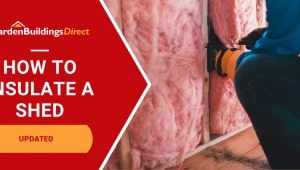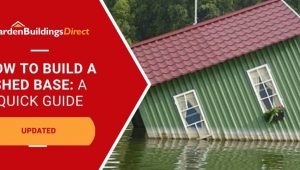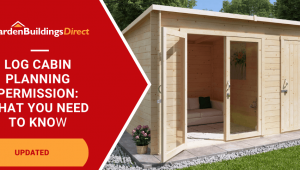Jump to:
Your garden room is ready, but the floor is bare. And now you’re staring at it, wondering what to do. This guide will share some garden room flooring ideas to get you started.
Reminder: Before You Change Anything
Before making any changes to your garden room floor, ensure your wooden building has had time to settle. Natural movement of the timber can cause damage if you’re installing material which restricts its ability to move. You can also end up trapping moisture underneath the boards, so ensure everything is dry and that you have adequate subfloor damp proofing in your building’s base.
Modifications to a product from Garden Buildings Direct are undertaken at your own risk and may void the guarantee.
Flooring Ideas for a Garden Room
Here, we’ll look at the different ways to handle your garden room floor:
Work with your floorboards
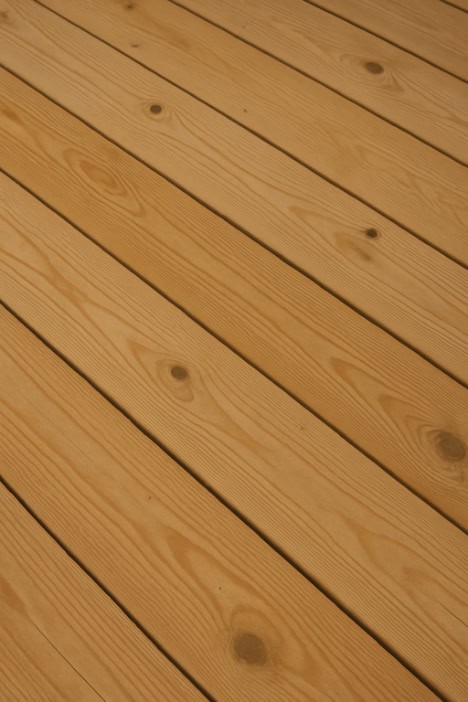
Most garden rooms, like log cabins and garden offices, come with wooden floorboards. These can contribute to the ‘woody’ feeling of your cabin, if that’s the vibe you’re going for. So let’s look at how to enhance that.
First of all, ensure there are no loose nails or gaps. Suppose the boards feel rough; sand to smooth them out. We recommend staining or sealing the wood next for protection.
When everything is done, we can move on to how to decorate it.
Paint it, then add a rug
You can paint bare wood floorboards, but make sure they’re sanded first and use a paint made for wood. Lighter colours, like soft cream or whitewash, are best if you want to make the room feel bigger. Or, go for darker shades, such as charcoal grey or deep brown, to hide marks and create more of a ‘night party’ room.
You can leave the painted floor as it is, or add a rug to bring in colour and create more comfort underfoot. If you do use a rug, pick one that’s easy to clean, especially if you’ll be coming in from the garden. Only place it once the paint is fully dry to avoid marks or sticking.
Try laminate or vinyl
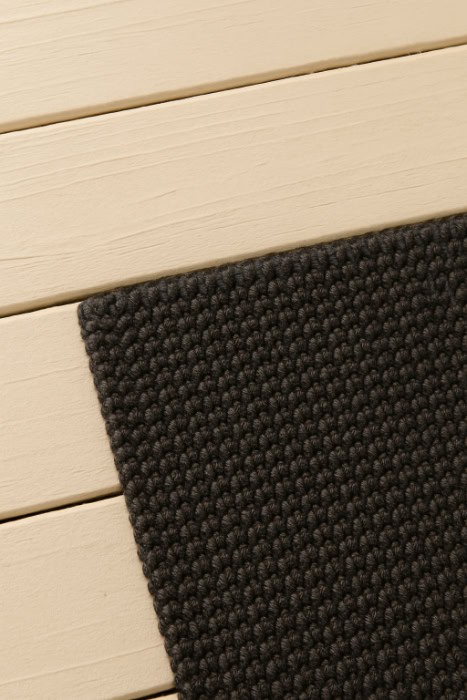
If you want a fresh look that still feels like real wood or stone, laminate or vinyl is the way to go. Laminate can give you a wood or stone effect with a smooth, easy-cleaning finish. Meanwhile, vinyl comes in sheets or tiles that are easy to clean and maintain.
Leave a small gap around the edges to stop the floor from buckling or warping. If you can, go for snap-together laminate or loose-lay vinyl as they’re easier to work with.
Go for a full carpet
Carpet can make a garden room feel warmer underfoot and quieter, but it has its challenges. If you come in from wet grass or muddy shoes, the carpet will show marks and take longer to dry than a hard floor. To avoid constant cleaning, use a sturdy door mat outside to keep most of the moisture and dirt off the carpet.
Choose a low-pile or stain-resistant carpet to handle spills better. It gives the comfort and insulation of carpet, while being low-maintenance.
Use cork flooring
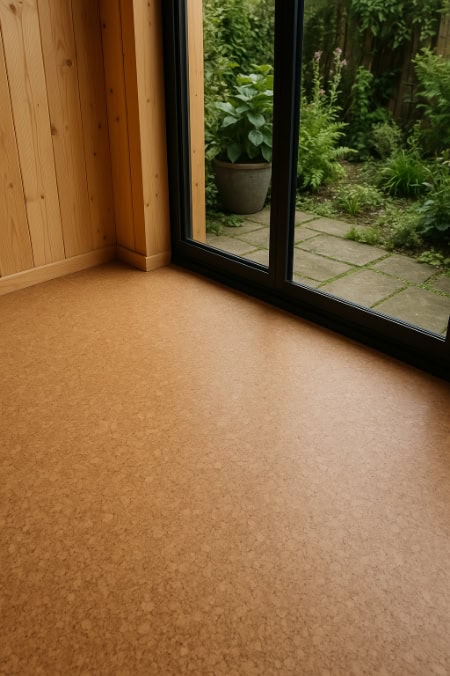
Cork flooring is made from the bark of cork oak trees, pressed into tiles or planks. It’s lightweight, cushioned, and can trap heat. If you spend hours in your garden room working or relaxing, you might want to consider this.
It’s also easy to repair. Damaged tiles can be replaced without pulling up the whole floor.
Invest in engineered wood
This type of garden room flooring can give you the same look as hardwood, but with better stability. It handles changes in temperature and humidity, so the boards are less likely to swell, warp, or split. While it can be pricey, it lasts longer and can even be sanded and refinished a few times.
Round-up
This list of garden room flooring ideas starts with using what you already have, a.k.a. your floorboards. You can refresh them with paint and a rug. Or switch things up with laminate or vinyl, or go for full carpet for extra comfort. Cork flooring is nice, too, while engineered wood gives a premium finish, though it can be on the pricier side.
Don’t rush into anything, and please make sure you’re okay with losing the warranty, just in case!
Up next on your reading list: Can You Install Under Floor Heating in a Log Cabin
